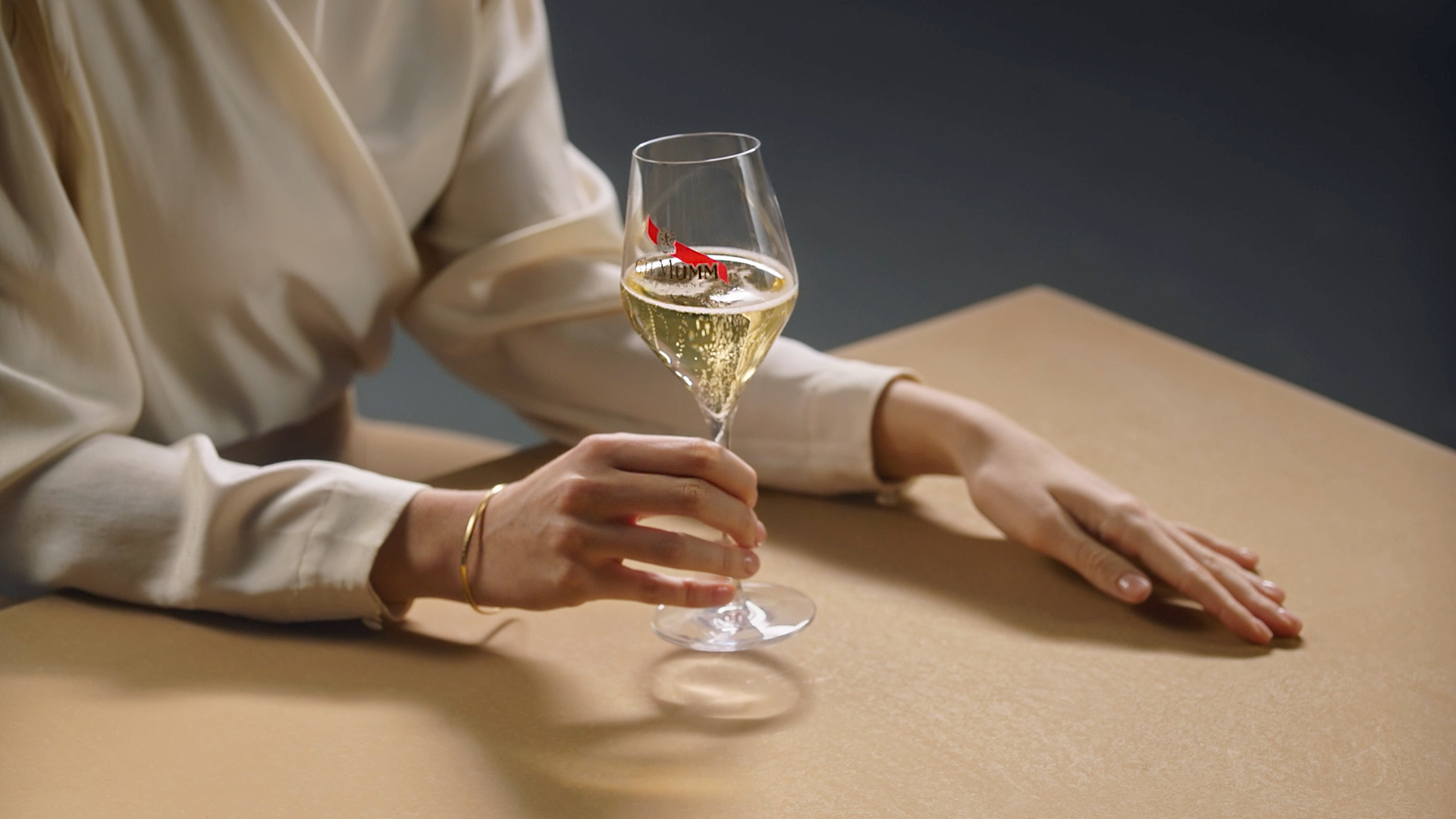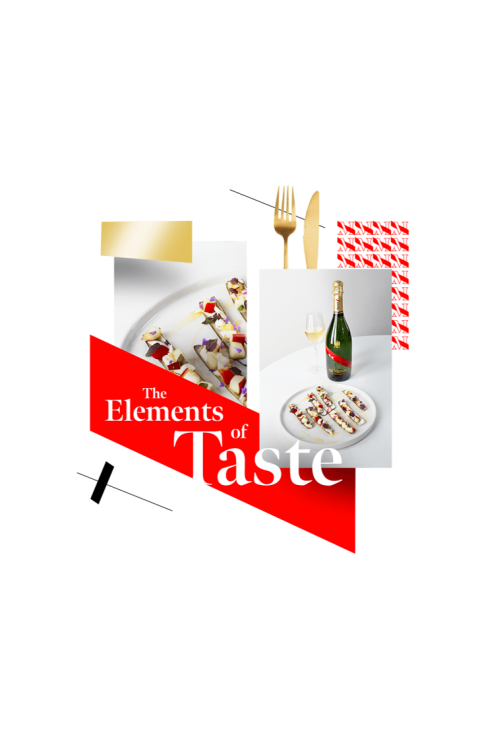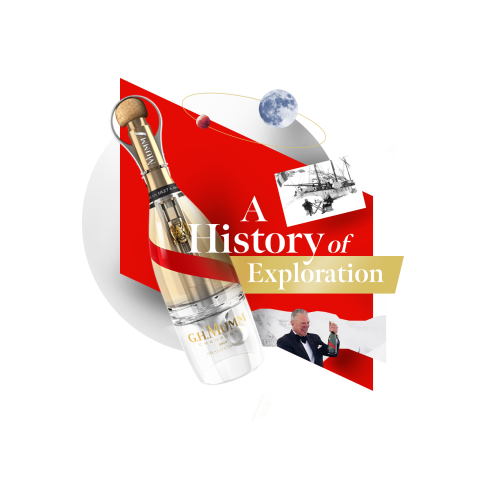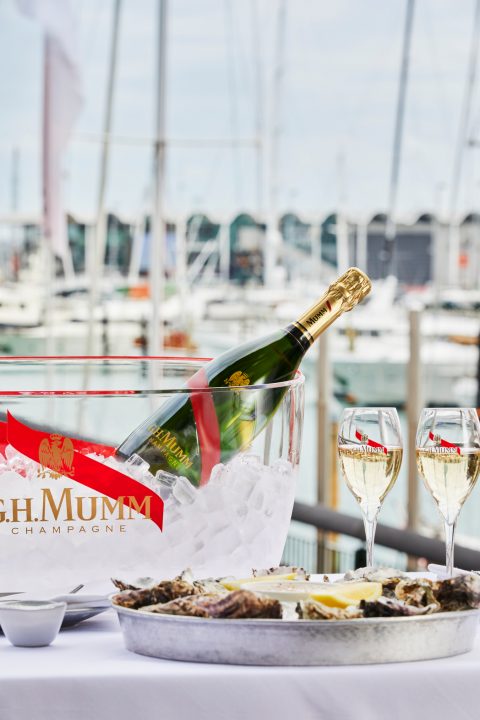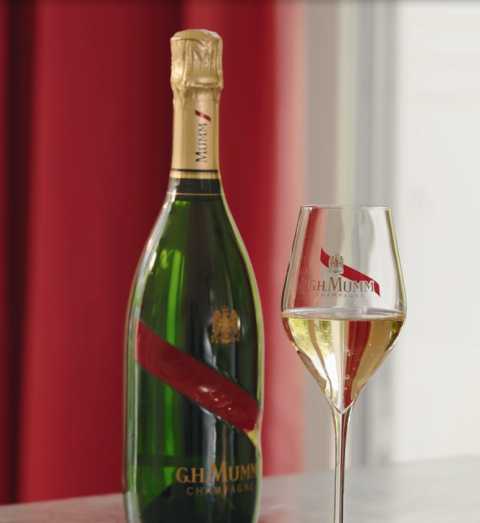How to taste Champagne?
Tasting a Mumm Champagne is a sensory experience like no other, and one which anybody can enjoy. Beneath that bubbly surface lies an immense array of flavors and aromas, just waiting to be explored.
Tasting champagne requires no prior expertise, but simply taking the time to follow a few simple rules can greatly enhance the experience.
Read our guide on how to taste champagne, a feast for the senses in three easy steps.
TASTING CHAMPAGNE, A FEAST FOR THE SENSES
Tasting champagne is above all a sensory experience, and one which calls upon our senses of sight, smell and taste. You don’t need to be an expert to enjoy and appreciate fine champagne, but taking the time to taste properly will vastly enhance the tasting experience.
With that in mind, here is our guide to tasting champagne in three simple steps.

STEP ONE: LOOK
The first step is to look closely at the champagne in your glass, studying its color, clarity and bubbles.
Look at the way the bubbles form and rise to the surface. The size of the bubbles is an indicator of quality: the smaller the better. Naturally, champagne is renowned for its very fine, elegant bubbles.
Color is also an indicator of age. Younger champagnes are often paler and clearer than older vintages.
STEP TWO: SMELL
The next step calls upon our sense of smell, as we explore and enjoy the wine’s complex bouquet of aromas—also known as the nose.
First, give the champagne a little time to open up in the glass. Hold the rim of the glass just below your nose and inhale gently. Start by letting the aromas wash over you. Then try to pick out and describe some of the distinctive notes you can detect. How would you define those aromas? Are they fruity, floral, woody? Remember that the aromas found in the nose are a hint of the flavors to come on the palate.


STEP THREE: TASTE
And now for the final sense, and perhaps the most important of all: taste. Take a sip of your champagne and allow the flavors to fill your mouth.
Again, try to pick out and put words to some of those complex flavors. You may detect red berries, or perhaps hazelnut, or even a dash of creamy vanilla. And what about those fresh citrus notes?
The list is virtually endless, testament to the infinite aromatic complexity of Mumm champagnes.
THE ONE OPINION THAT REALLY MATTERS: YOURS
It is important to bear in mind that wine tasting is an eminently subjective exercise – for all manner of biological, chemical and personal reasons, we all experience wines in slightly different ways. The best approach is to trust your intuition and taste – follow your nose, and, of course, your palate.
IN CONCLUSION
Tasting Mumm champagnes is a rich sensory experience, a moment of intense pleasure which requires no special training.
Just remember our three easy steps: look, smell, taste. And the all-important fourth step… enjoy!
